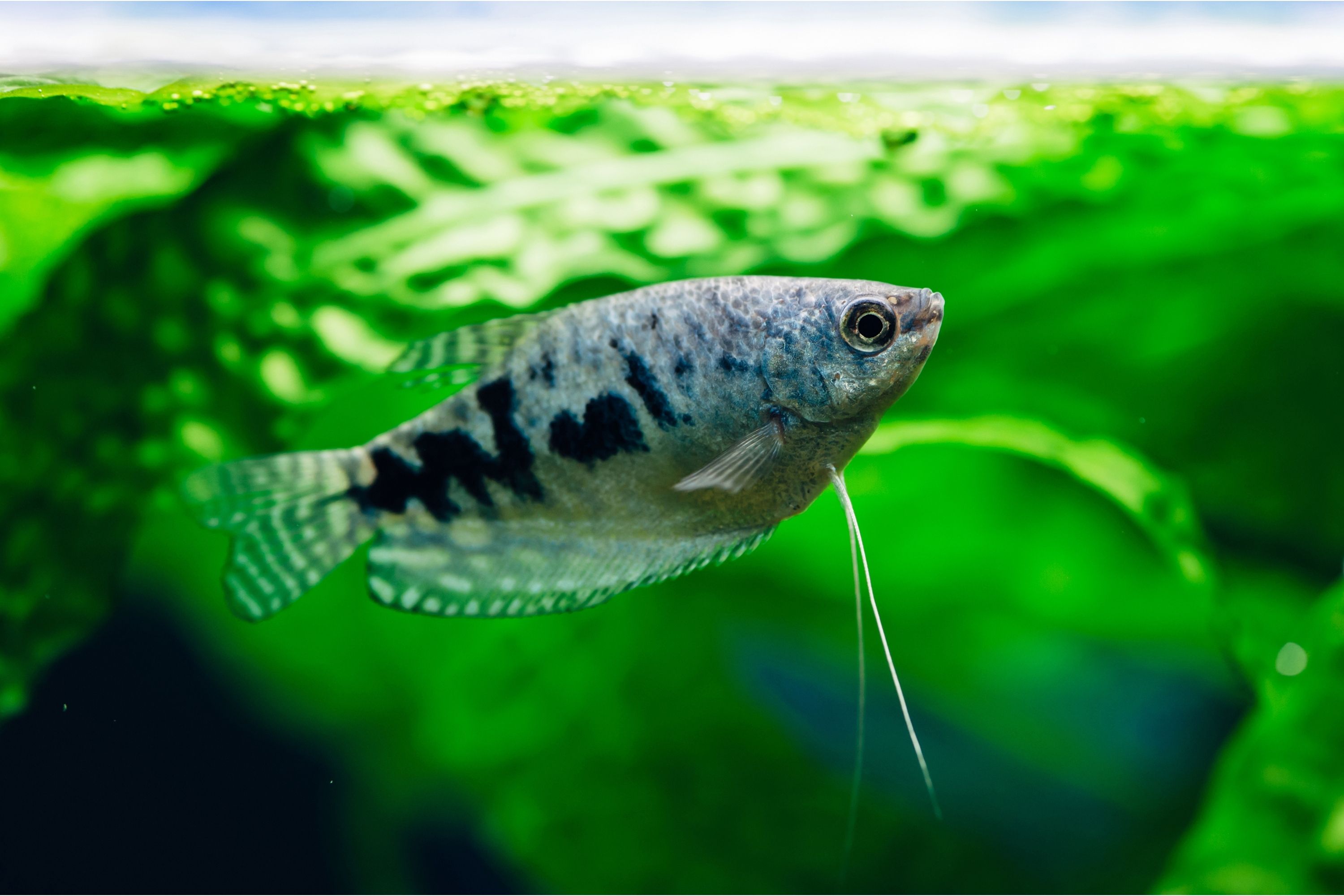Opaline gourami
(Trichopodus trichopterus)

Description
The three spot gourami (Trichopodus trichopterus), also known as the opaline gourami, blue gourami, and gold gourami, is a species of fish native to southeastern Asia, but also introduced elsewhere. This gourami gets its name from the two spots along each side of its body in line with the eye, considered the third spot. This species is of minor commercial importance as a food fish in its native range and is also farmed. It is also popular in the aquarium trade. Three spot gourami are native to standing or slow-moving freshwater habitats in southeastern Asia, ranging from Yunnan (China), through mainland southeast Asia (Cambodia, Laos, Malaysia, Myanmar, Singapore, Thailand and Vietnam) to Indonesia (Java, Borneo and Sumatra). They have been widely introduced outside their native range, such as the Philippines, India, Sulawesi, and southwestern Trinidad. These fish live in marshes, swamps, canals, and lowland wetlands. They migrate during the flood season from permanent water bodies to flooded areas, such as seasonally flooded forests in the middle and lower Mekong. During the dry season, they return to these permanent water bodies. These fish feed on zooplankton, crustaceans, and insect larvae. The male builds a bubble nest for the eggs, which he protects aggressively. The three spot gourami gets its vernacular name from the two spots along each side of its body in line together with the eye being considered as the third spot. It is also known as "hairfin gourami" (from its specific name trichopterus) or "two-spot gourami" (in Malaysia). Variety names include "opal" or "opaline gourami" (or "Cosby gourami") for varieties with a marbled pattern, "blue gourami" for the blue morph, "gold" or "golden gourami" for the yellow morph, "platinum gourami" for the white morph, and "lavender (or "amethyst") gourami" for the result morph of crossing a blue and gold. Three spot gourami are known to change color (their black spots will fade) when under high stress or when they are not kept under good conditions. Healthy fish have two vivid black spots on each side of their bodies, but these fade with age. Selectively bred varieties most commonly available in the aquarium trade are opaline (or opal) (with a marbled pattern), platinum (or silver) (whitish), blue, golden (or gold) (xanthochromistic), and lavender (or amethyst) (the result of crossing a blue and golden, having a purple coloration).
Taxonomic tree:







